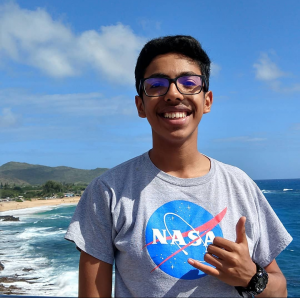How Vaccines Should Be Distributed

Connecticut Official State Website
While vaccines are being distributed now, they are being administered at a slow rate. This makes it more important to be stringent on who gets vaccinated first.
With an ongoing third wave of COVID-19 and many more expected waves, the US is struggling to keep up with the virus and is unable to control its spread. The only hope to end the pandemic soon is a vaccine that is effective in immunizing the general public. However, as vaccine development progresses, it is also important to consider which groups should receive the vaccine first. Ideally, vaccines should be distributed first to hotspot regions and the people who receive them should get vaccines in order of how essential their jobs are.
The long term goal of vaccination is to obtain herd immunity to a disease: that is the threshold of people who need to be immune to the virus in order to ensure the protection of a population. In this case, roughly 95% of people need to be immune to COVID-19, and the best way to do so is via vaccination. This also protects people who are immunocompromised who can’t get the vaccine because the transmission of the virus is quite limited. The most ambitious timeline for widely accessible vaccines is by April, so there is still quite some time to go. Since herd immunity would take several years, we need to ask a different question: where can the vaccine help people the most in the short term?
Beginning geographically, it would be ideal to target hotspot regions as that is where most of the infection would occur. Currently, California, Texas, Florida, and New York are leading in the number of cases. Unsurprisingly, these are also the states in which the medical facilities are the most crowded and under resourced. A particularly relevant trend is that within these states, the counties with the highest infection rates also tend to be the ones with the most poverty, meaning that people have less ability to pay for a vaccine. In this scenario, subsidies may be necessary to ensure the protection of lives. Essentially, the government has a moral obligation to partially fund the vaccine development/distribution process to the point where it is affordable for all Americans as a vaccine is almost synonymous with life when it comes to dealing with a deadly virus.
Geographic distribution aside, essential workers (nurses, doctors, grocery store personnel, etc.) and their families, should be the ones who receive the vaccine first. The case for essential workers is simple: they keep the country running, so it is imperative that they stay healthy. We cannot suffer any major upsets in an already fragile state, and so the health of our essential personnel should be our utmost concern. Since essential workers come into contact with many people, there is an increased likelihood that they also carry the virus, so it is important to vaccinate their families, who effectively have the same (albeit indirect) exposure to the virus via their essential-worker family members. These would be the most at-risk populations who need to get the vaccination first.
Once most essential workers and their families get vaccinated, we can move on to the second most at-risk population: senior citizens and immunocompromised individuals. While some immunocompromised individuals may not be able to safely take a vaccine, those who can should be given priority as their lives are more at risk if they catch COVID-19. The same applies to senior citizens. It only makes sense to prioritize protecting those who actually need protection. While some may argue that prioritizing who gets a vaccine is a form of discrimination that devalues the lives of others, the reality of the situation is the US does not have enough vaccines to give everyone, and thus should give it to those who need it the most.
After that point, we can open up the vaccines to the general public, prioritized by geographic location. In an ideal scenario, we should give it to those in order of who has the most exposure, but with the already deteriorating organization in the government, such levels of stratification seem like a pipe dream.
Granted, all of this is given that the vaccine passes the Food and Drug Administration (FDA) guidelines. The current vaccines by Pfizer and BioNTech have just finished a round of phase 3 trials (testing on a wider group of people and monitoring for side effects) with promising results. Pfizer boasts a near 95% effectiveness in treating COVID. However the vaccines are not ready for distribution just yet. Currently, the FDA has modified its guidelines to allow a more rapid approval process, however the Pfizer vaccine has yet to clear all of their stringent requirements. When a vaccine comes out, it is sure to be mostly safe for the public, and at that point, we should ensure that the people who get the vaccine are those who need it the most.






